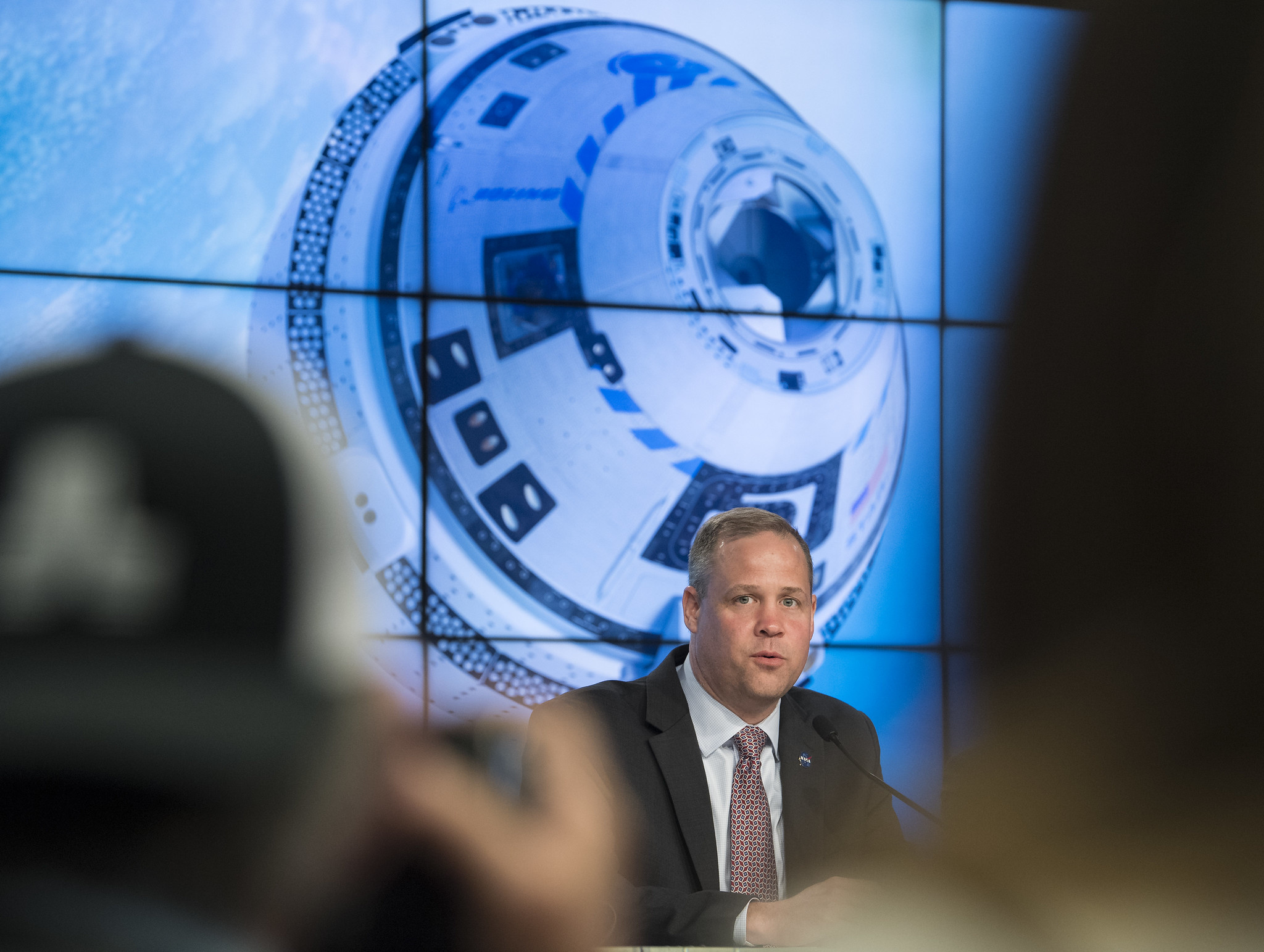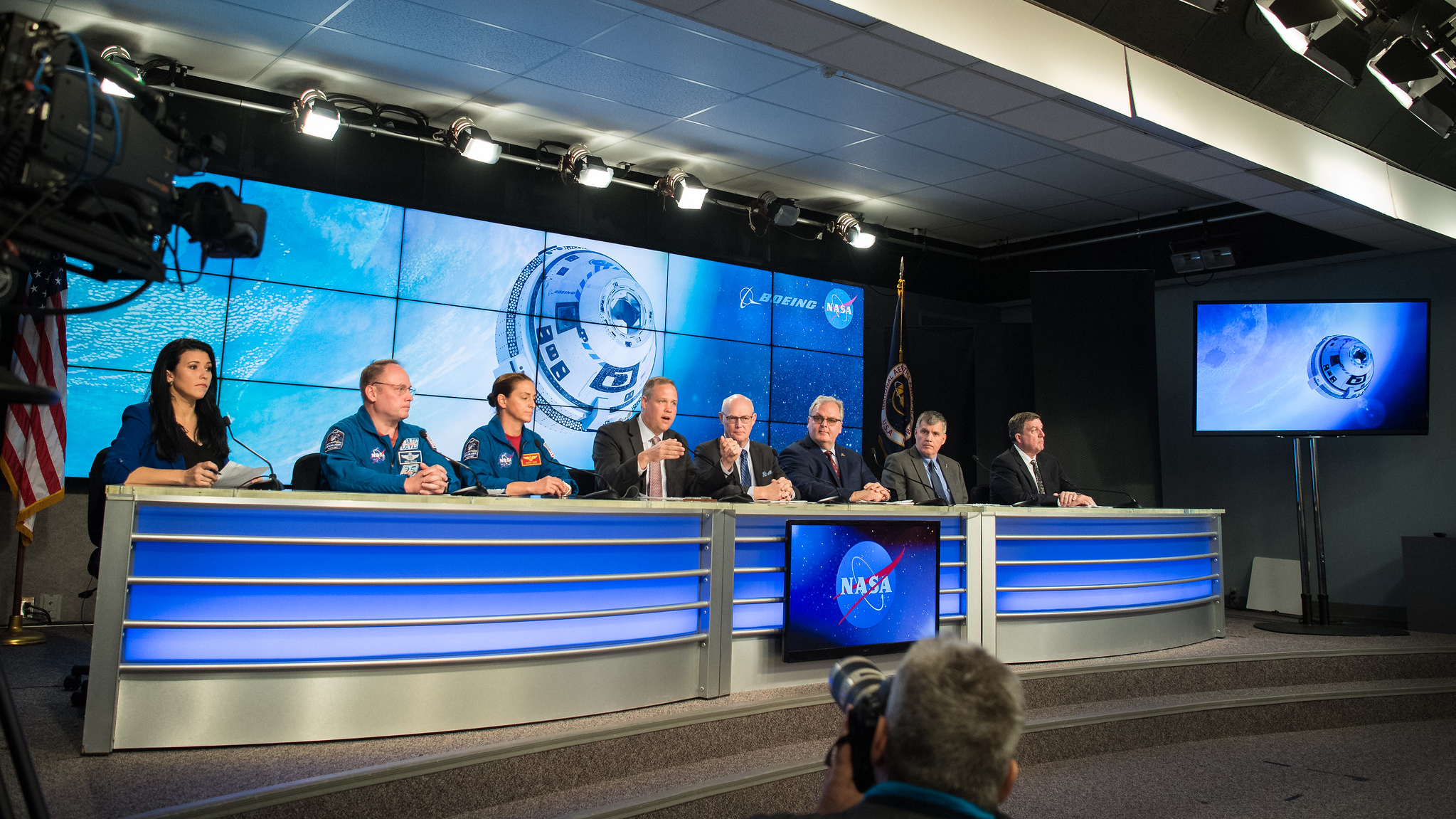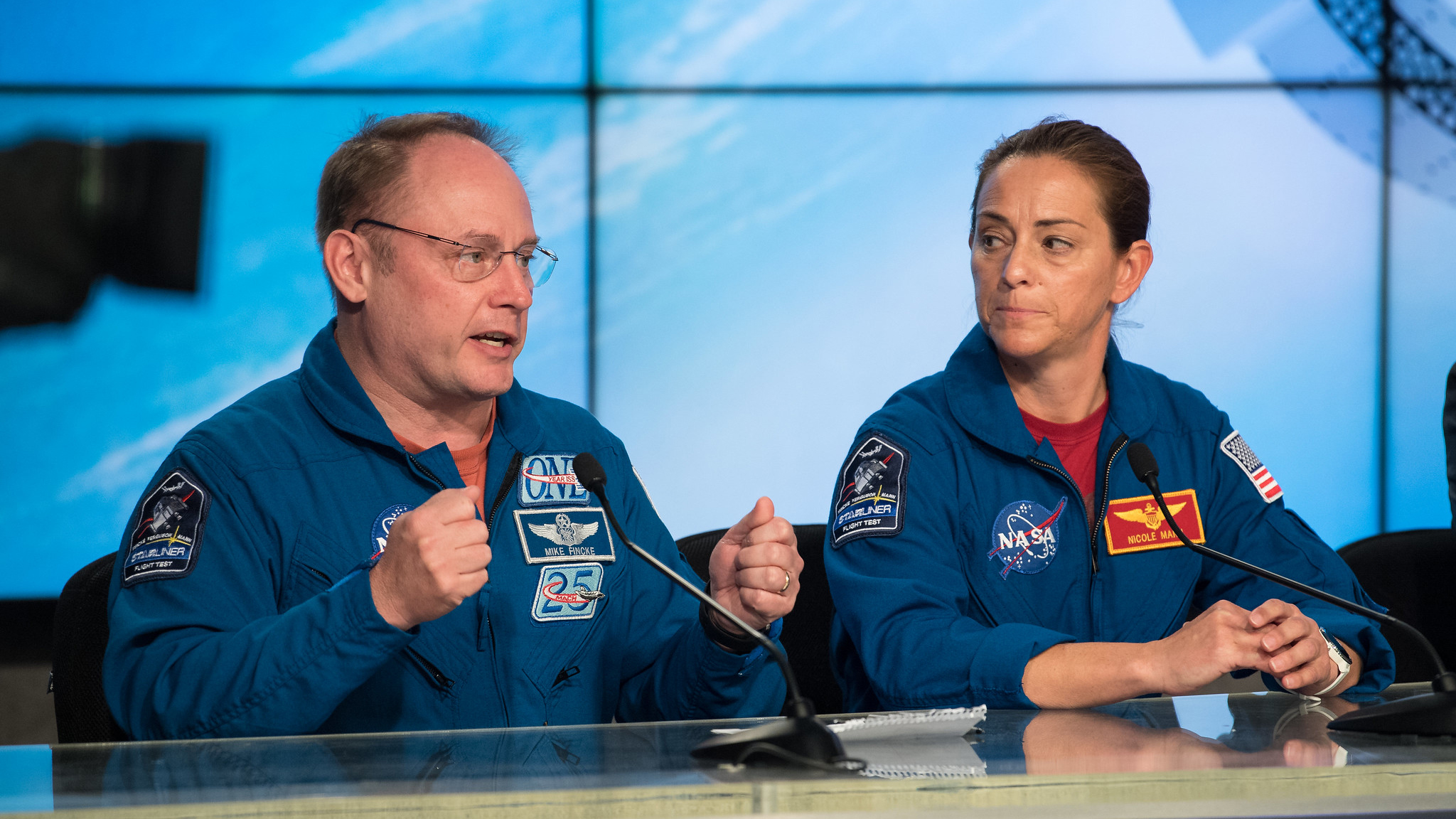'A Lot of Things Went Right,' NASA Chief Says After Starliner Anomaly
CAPE CANAVERAL, Fla. — A United Launch Alliance Atlas V rocket successfully launched Boeing's reusable spacecraft, the CST-100 Starliner, on its first orbital test flight mission just before sunrise this morning (Dec. 20). However, the capsule suffered an anomaly about 15 minutes after liftoff, which prevented it from continuing its mission to the International Space Station.
"Today, a lot of things went right," NASA Administrator Jim Bridenstine said at a post-launch news conference at NASA's Kennedy Space Center in Florida, following the anomaly. "This is, in fact, why we test. Just a few minutes ago, I got off the phone with the Vice President. I gave him a briefing on where we are. He maintains that he is very positive, as the chairman of the National Space Council, in our ability to once again launch American astronauts on American rockets from American soil."
This uncrewed mission, called the Orbital Flight Test (OFT), was designed to be a "dry run" for future crewed Starliner missions. It has not yet been decided, following this anomaly, what testing will happen next with Starliner, Bridenstine said.
Video: Starliner May Have Reached Space Station With Astronauts On Board
Related: Boeing's 1st Starliner Flight Test in Photos

The first crewed Starliner flight, or the Crewed Flight Test (CFT), was scheduled to lift off to the space station in mid-2020, with NASA astronauts Nicole Mann and Mike Fincke and Boeing astronaut (and former NASA astronaut) Chris Ferguson on board.
#Starliner Update: We have made a final decision - Starliner will not dock with the @Space_Station and will return to White Sands on Sunday.December 20, 2019
So, what happened?
About half an hour after the Atlas V rocket's successful liftoff this morning, after the spacecraft separated from the rocket's Centaur upper stage, the capsule was scheduled to complete an orbital-insertion burn. That maneuver would give the vehicle the extra push it needed to reach an orbit around Earth that would allow it to rendezvous and dock with the International Space Station on Saturday (Dec. 21).
Get the Space.com Newsletter
Breaking space news, the latest updates on rocket launches, skywatching events and more!
However, as Bridenstine explained at the news conference, there was an anomaly with the procedure. "When the spacecraft separated from the launch vehicle, we did not get the orbital insertion burn that we were hoping for. It appears as though the mission elapsed timing system had an error in it," Bridenstine said. "That anomaly resulted in the vehicle believing that the time was different than it actually was."
So, as Bridenstine explained, this timing error in the automatic system caused the spacecraft to burn a lot of extra propellant that it normally wouldn't have used to maintain a stable position. The burns left the spacecraft with not quite enough fuel to safely reach and rendezvous with the space station. So, Starliner was able to make it to orbit, it but it didn't reach the correct orbit needed to reach its destination.
Ground teams back on Earth tried to send signals up to command the spacecraft to do the orbit insertion after the automatic system didn't send the signal in time. However, because Starliner happened to be in a blackout area in between two Tracking and Data Relay Satellites (TDRS) at that time, mission personnel were unable to get the signal through soon enough.
"By the time we were able to get signals up to actually command it to do the orbital insertion burn, it was a bit too late," Bridenstine said at the news conference, "and the reason it was too late is because it appears — and remember, all of this is very early and preliminary, and we're learning things moment by moment — but it appears as though we were between TDRS communication satellites, which meant we couldn't get the command signal to tell the spacecraft that it needed to do the orbital insertion burn soon enough."
"We do not understand the root cause of that," added Jim Chilton, Boeing's senior VP for its space and launch division, added during the news conference.

A silver lining
While Bridenstine confirmed that Starliner will not be going to dock with the space station, "a lot of things went right" with the OFT mission, he reiterated. "A lot of 'firsts' did happen today that were very good, and we're going to continue to learn ... from this test flight."
Mission teams are working to raise Starliner's orbit to set it on a path to land at White Sands Missile Range in New Mexico, most likely early on Sunday morning (Dec. 22), where the capsule was initially scheduled to land. The administrator said that although the craft will not dock with the space station, the OFT mission is still an important learning opportunity as the launch, orbit and the landing will all provide both NASA and Boeing with critical data about Starliner. And, according to Chilton, right now, "the spacecraft looks healthy."
Landing data will be especially critical, Bridenstine explained, and is an important test objective in and of itself. The Starliner team aims for the capsule to make a safe landing at the same site where future crewed missions will land, in New Mexico. But they first have to learn more about the anomaly that occurred to ensure the vehicle's can safely re-enter Earth's atmosphere, especially before any astronauts fly inside it.
Assuming that Starliner lands as expected, "the odds are high, really the same as if we were on our way to rendezvous," that the capsule will land safely and be able to be refurbished and reused, Chilton told Space.com. "We ended up in a place in space we didn't expect to be, but we don't see hardware issues that would drive a different refurbishment of turnaround."
"For this mission, we have predicted the return to White Sands in 48 hours," Chilton said. "At the risk of getting out ahead of my NASA colleagues, I'll call that baseline, because we're certainly going to diagnose what's going on. If we need another day to diagnose what's going on, we'll do that. If we diagnose it and the joint team, the NASA-Boeing team says, 'Hey we can stay a little longer and get a larger proportion of the test objectives completed,' we'll look at that. We're definitely open to that," Chilton added.
Safety and success
As for the things that did go right, the Atlas V rocket's launch was successful, and, as United Launch Alliance president and CEO Tory Bruno said during the news conference, the rocket successfully hit a number of test objectives.
Additionally, as Bridenstine said, while they were not able to communicate the orbit injection command to the spacecraft because of its position between the satellites, astronauts on board could have potentially done something about it by assuming manual controls.
And, as Bridenstine stressed a number of times, if there were human crew members onboard Starliner during this anomaly, they would have been safe. In fact, the astronauts, who watched the launch closely, said that they aren't worried.

"We don't have any safety concerns," Mann said about Starliner at the news conference. "This vehicle is a new level of automation that we've never seen before … that's why you have test pilots on board. Especially for these early missions, that's our job, that's what we're trained to do.
Moving forward
NASA and its partners will continue to share updates about Starliner and its future as new information arises, Bridenstine said.
"We as an agency and our partners at Boeing and ULA have committed that when there is something that is a challenge, we will be very clear and transparent about it," Bridenstine said. "we will continue to get information, we will continue to share information. It's in the interest of the nation and we want to have support of the public. To the extent that we can share data we will do it."
You can find continued updates about Starliner here at Space.com and at starlinerupdates.com.
- How Boeing's Starliner Orbital Flight Test Works: A Step-By-Step Guide
- Photo Tour: Inside Boeing's CST-100 Starliner Spaceship Hangar
- In Photos: Boeing's Starliner Pad Abort Test Launch

Join our Space Forums to keep talking space on the latest missions, night sky and more! And if you have a news tip, correction or comment, let us know at: community@space.com.

Chelsea “Foxanne” Gohd joined Space.com in 2018 and is now a Senior Writer, writing about everything from climate change to planetary science and human spaceflight in both articles and on-camera in videos. With a degree in Public Health and biological sciences, Chelsea has written and worked for institutions including the American Museum of Natural History, Scientific American, Discover Magazine Blog, Astronomy Magazine and Live Science. When not writing, editing or filming something space-y, Chelsea "Foxanne" Gohd is writing music and performing as Foxanne, even launching a song to space in 2021 with Inspiration4. You can follow her on Twitter @chelsea_gohd and @foxannemusic.
-
Lagrange President of the Boeing Starliner Fan Club Jim Bridenstine said, "Hey, a lot of things went right," after Boeing's Orbital Flight Test failed. The capsule ran out of gas and 'putt-putt-putted' to a stop short of the correct altitude, reportedly due to a 'timing error'. Bridenstine was emphatic, "Next time we're going to have a backup watch and I guarantee it will be fully wound."Reply -
KingArthur Reply
Kinda like "Other than that Mrs Lincoln, how did you like the play?"Admin said:Boeing's Starliner might have failed to reach the International Space Station during its Orbital Flight Test, but the mission is far from a total loss, NASA Administrator Jim Bridenstine explained.
'A Lot of Things Went Right,' NASA Chief Says After Starliner Anomaly : Read more









